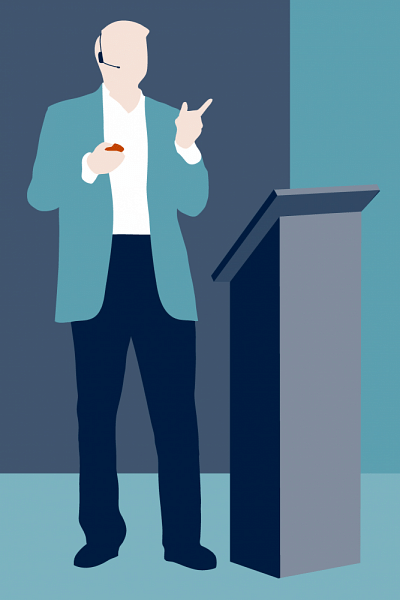Best ways to start a presentation

WOW THEM, SHOCK THEM
Tell a gripping story before flipping out the PowerPoint. Science tells us that our brains are hardwired for storytelling. Sharing an experience or a quotation from your real life with the audience allows them to identify with you on a personal level. Your story needs to have a message or a moral, but it needs to be brief and relevant to the topic you're speaking about.
Ask a question. Or a rhetorical question. Get your audience thinking before you've even started. Questions stimulate the audience's mind and this is exactly how you want them – not as passive listeners, but active participants. Similarly, you can take a contrarian approach. State a universally accepted truth, then go against it and watch as your audience makes hesitant disbelieving faces as they inch closer to the edge of their seats asking for more.
And if you've got a soft corner for important-sounding quotations by important people, put a twist to them and provoke your listeners. Or use a quote from a movie or an unlikely character. Quotes also work as a way to establish the overarching theme of your presentation without draining the life out of the audience with the less-interesting sounding agenda you cooked up in your head.
Last but not least, if you're the type that reads the papers, put your book smarts to use by starting your presentation with a shocking headline or statistic. The vice president of sales for a leading healthcare IT firm successfully sells software solutions to hospitals by starting her presentation with: "Medical errors leading to patient death are much higher than previously thought. Preventable adverse events cause up to thousands of deaths per year for patients who seek care at a hospital. That means medical errors are the third leading cause of death behind heart disease and cancer. Our vision is to create a world free of medical errors, and we need your help." Stats show that you seriously know your stuff, providing credibility as well as gravity to your presentation so that the audience listens and responds positively to your recommendations.
GET VISUAL
Wit and humour and superhuman powers of instilling suspense are all great tools to kick off a presentation, but some things are best left to visuals. Instead of telling the audience how a new product works, show them – don't be afraid to bring a prototype in or play a video. When in doubt, let multimedia lend you a hand.
Even if you're not talking about a new product or a new project, visual aids or props can help emphasise a point. Remember when in The Wolf of Wall Street, Jordan Belfort takes a pen and asks a room full of salesmen to sell it to him? The point of the seemingly random visual metaphor was to set off a creative, productive brainstorming session – once again, to stimulate and engage the audience. When used properly, anything from a table clock to a balloon to a deck of cards can assist you to warm up to the audience.
Photographs and graphics in your presentation can add more than just aesthetic appeal – they can make drive home your message. A video of casual civilian testimonials can inject humour as well as introduce public perception on a topic. The real secret to winning over your audience is to invoke an emotional response.
So don't squander those opening seconds with a repetitive introduction because you've already been introduced before, or poorly prepared ice-breakers filled with 'ums' and 'uhs' or overused crude humour that does the job but is completely irrelevant. As Walt Disney put it, "I would rather entertain and hope that people learned something than educate people and hope they were entertained." Next time you're up there doing your thing, all one-hundred pairs of eyes gleaming in your direction, don't rely on improv – know what you're going to say, play the part, stick to the context and unleash the best you've got within the very first seconds.

 For all latest news, follow The Daily Star's Google News channel.
For all latest news, follow The Daily Star's Google News channel. 



Comments